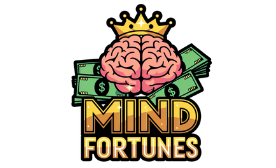A draft executive order from President Donald Trump aims to integrate artificial intelligence across K-12 education, with potentially significant ramifications for schools.
The order would instruct federal agencies to take steps to teach students how to use AI, train teachers to incorporate it into their tasks, and partner with the private sector to develop relevant programs in schools, according to the Washington Post, which obtained a copy of the draft order and first reported about it.
AI, and more specifically America’s competitiveness in this technology, has become a major focus of the Trump administration, said John Bailey, a nonresident senior fellow at the American Enterprise Institute. Another focus of the administration is China, which recently announced its own policy that aims to integrate AI into its education systems, said Bailey.
“When you combine those two things, it’s not surprising to me that you would see the administration leaning into this moment to say that we should be tasking the agencies to explore different ways of leveraging AI to kind of help with workforce issues, with AI literacy,” he said.
If Trump signs it, the order would come at an important time, Bailey said, for schools to harness the technology to accelerate learning as students’ math and reading scores continue to lag.
But carrying out a federally led initiative—whether it’s an executive order or something else—to integrate AI wholesale into America’s K-12 schools could meet several hurdles. Among them: A slimmed down federal government with less funding, staffing, and expertise may struggle to carry out the draft order’s directives, and states may be resistant to the Trump administration’s efforts.
What the draft executive order on AI in schools would require
The copy of the order obtained by The Post is marked “predecisional,” which means it could change before the president signs it or the administration could scrap it altogether.
As it is currently written, the executive order would establish a White House task force on educating young people about artificial intelligence chaired by the director of the White House’s Office of Science and Technology Policy and including the secretaries of education, agriculture, labor, and energy, as well as Trump’s special adviser for AI and cryptocurrency, according to The Post.
The draft order reportedly instructs the task force to identify existing federal funding that can be directed toward the effort, and it tells Education Secretary Linda McMahon specifically to prioritize federal grant funding for training teachers on how to use AI. The order states that all educators should receive professional development on incorporating the technology into all subject areas. Labor Secretary Lori Chavez-DeRemer would be tasked with developing registered apprenticeship programs in AI-related jobs.
The draft order further instructs relevant federal agencies to prioritize spending on AI and seek out public-private partnerships with academia, industry, and nonprofits to teach students AI literacy and critical thinking skills.
Finally, the order would create an AI competition for students and educators called the “Presidential AI Challenge,” according to The Post.
The departments of education and labor and the White House’s Office of Science and Technology Policy did not respond to requests for comment.
These are all promising goals, said Pat Yongpradit, the chief academic officer of Code.org, a nonprofit that promotes computer science education.
“A lot of the points made in the [draft] executive order … are positive things, especially the focus on AI literacy and critical thinking skills,” he said.
AI literacy, however, shouldn’t just focus on how to use AI as noted in the draft order, said Yongpradit, who also leads TeachAI, an initiative supporting schools in using and teaching about the technology. Comprehensive AI literacy should include learning how to interact and collaborate creatively with the technology, effectively manage AI’s actions, and responsibly design AI solutions, he said.
Yongpradit, who has not seen a copy of the draft order, said he’s interested to see what this would look like in practice.
“Professional development is key for changing classroom practice, but it needs to be high quality,” he said.
Joseph South, the chief innovation officer for ISTE+ASCD, said he’s encouraged by the reported contents of the draft executive order. What he would like to see is more support for education leaders, he said.
South said that when he led the office of education technology during the Obama administration, he saw a lot of professional learning on ed tech for teachers, but “almost no support for leaders around ed tech.
“I’d love to see that become an element of the final [executive order],” he said.
National AI priority would be difficult without federal support
But starting a nationwide initiative to promote AI integration into K-12 teaching and learning could be difficult given recent funding and staffing cuts to the U.S. Department of Education and other federal agencies, experts say.
For example, the team at the Education Department that was tasked with framing a national educational technology plan under multiple administrations and assisting states and districts in implementing technology in schools was recently eliminated as part of the Trump administration’s efforts to trim the federal workforce and ultimately eliminate the Education Department. The department now has about half the number of staff as it did when Trump took office.
“It’s hard to kind of understand at a time when they’re deprioritizing federal education policy and priorities, how to reconcile that with establishing a national priority in this area [of AI],” said Bailey, a former director of the Office of Educational Technology during the George W. Bush administration. However, he said, a more streamlined Education Department might be better able to meet the priorities of the Trump administration as outlined in the draft order.
“Maybe the Department of Ed. is re-imagining how to best staff and structure and support something like this. But I think it’s an open question,” Bailey said.
At this time, schools need guidance and support on how to maximize AI’s benefits while minimizing the risks and potential harms, Bailey said. But even as the federal government may want to establish AI integration as an education priority and marshal resources to address the challenges schools face in doing this, the Trump administration runs the risk of undermining its goals by politicizing AI.
“History is replete with examples of really good and important work [in education] that, the moment the federal government started establishing it as a priority, ended up [becoming] controversial,” he said. “We’ve seen this with school accountability, we’ve seen it with Common Core.”
While AI-type technologies have been around for decades, attention to it spiked in 2022 following the release of ChatGPT, a generative AI tool that can produce human-like conversational responses to prompts. Since then, districts have been grappling with what role the rapidly evolving technology should play in classrooms.
The Education Department, under the Biden administration, released a toolkit for education leaders on integrating AI in schools with an eye toward safety, ethics, and equity concerns. At least 27 states and Puerto Rico have also developed AI guidelines of their own for districts, according to TeachAI.
The draft order comes as McMahon recently pondered how AI could be integrated into classrooms, particularly to improve one-on-one instruction. Speaking before tech company representatives and educators earlier this month at the ASU+GSV summit in San Diego, McMahon applauded a district that was integrating AI as early as pre-kindergarten. (She mistakenly referred to AI as “A1,” which kicked off a viral firestorm over the slipup.)
“Wasn’t all that long ago that it’s, ‘We’re going to have internet in our schools, whoop,’” she said. “Now, OK, let’s do [AI] and how can that be helpful? How can it be helpful in one-on-one instruction? How can it be helpful in absorbing more information for those fast learners?”

